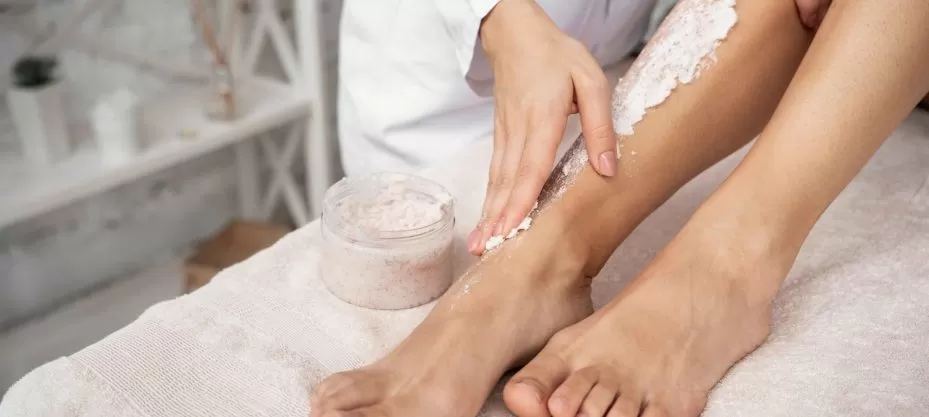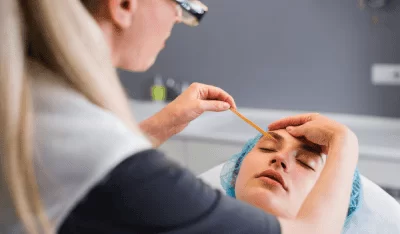Exfoliating before waxing provides benefits like smoother hair removal and helps prevent ingrown hairs. To properly exfoliate, follow a routine to remove dead skin cells and dirt, focusing on waxing areas. Risks include skin irritation and increased sensitivity, so exfoliate gently. Alternatives include chemical exfoliants or enzymatic exfoliation for sensitive skin. By exfoliating 24-48 hours before waxing, skin can be less sensitive and irritated. This preparation can enhance your waxing studio experience.
Benefits of Exfoliating Before Waxing
Exfoliating before waxing helps to remove dead skin cells, allowing for a smoother and more effective hair removal process. Dead skin cells can clog hair follicles, making it harder for the wax to adhere to the hair. By exfoliating beforehand, the wax can grip the hair more effectively, leading to a cleaner and longer-lasting result.
Furthermore, exfoliation helps to prevent ingrown hairs. When dead skin cells accumulate, they can trap hairs beneath the surface, causing them to grow back into the skin. Exfoliating regularly can reduce the likelihood of ingrown hairs developing after waxing.
In addition, exfoliating can improve the overall texture and appearance of the skin. By sloughing off dead skin cells, exfoliation can reveal smoother, brighter skin underneath. This enhances the results of waxing and promotes healthier skin in the long run.
How to Properly Exfoliate Before Waxing
Following a proper exfoliation routine is essential to achieve the best results during the waxing process. Proper exfoliation helps to eliminate dead skin cells, dirt, and oils from the skin’s surface, allowing the wax to adhere better to the hair follicles. Before waxing, it is recommended to exfoliate the skin gently using a mild scrub or exfoliating glove.
Start by dampening the skin with warm water to soften it, then apply the exfoliant in circular motions, paying extra attention to areas where waxing will occur. Avoid rough scrubbing, as this can irritate the skin. After exfoliating, rinse off the exfoliant thoroughly and pat the skin dry.
Exfoliating 24-48 hours before waxing is crucial to minimize the risk of skin sensitivity and irritation. However, avoid exfoliating immediately before waxing, making the skin more prone to irritation and redness. Following these exfoliation steps can help guarantee a smoother and more effective waxing experience.
Potential Risks of Exfoliation Before Waxing
To ensure a safe and effective hair removal process, it is essential to be aware of the potential risks associated with exfoliating before waxing. Exfoliation can benefit waxing by removing dead skin cells and helping to prevent ingrown hairs. However, if done incorrectly or too aggressively, it can lead to adverse effects.
One of the main risks of exfoliating before waxing is skin irritation. Over-exfoliation can strip the skin of natural oils, causing dryness, redness, and sensitivity. This can make the skin more susceptible to irritation and discomfort during waxing. Moreover, exfoliating too harshly can cause micro-tears in the skin, increasing the risk of infection when waxing.
Another risk is increased pain during waxing. Exfoliating too vigorously can make the skin more sensitive, leading to heightened discomfort when hair is removed. This can result in a more painful waxing experience and potential skin damage if the wax adheres too firmly to the skin. To mitigate these risks, it is essential to exfoliate gently and avoid abrasive products before waxing.
Exfoliation Alternatives for Waxing
Before waxing, individuals can opt for alternative exfoliation methods to prepare the skin for hair removal. One effective alternative to traditional exfoliation is using chemical exfoliants containing ingredients like alpha hydroxy acids (AHAs) or beta hydroxy acids (BHAs). These chemicals break down the bonds between dead skin cells, allowing gentle removal without physical scrubbing.
Another option is enzymatic exfoliation, which involves using enzymes like papain (derived from papaya) or bromelain (derived from pineapple) to dissolve dead skin cells. Enzymatic exfoliants are usually milder than traditional physical exfoliants, making them suitable for sensitive skin types.
Alternatively, individuals can use exfoliating tools such as soft brushes or loofahs to gently slough off dead skin cells before waxing. These tools provide a mechanical exfoliation method that can help smooth the skin’s surface without being too harsh.
Other Waxing Tips:



